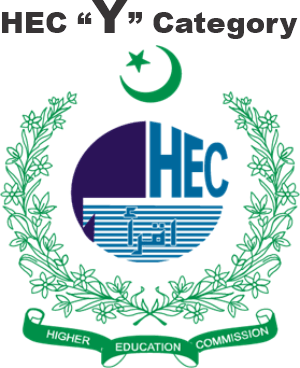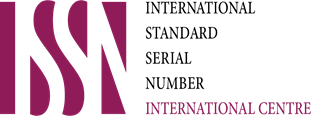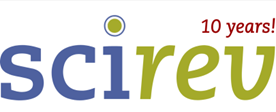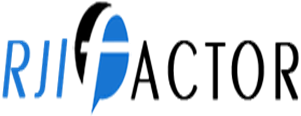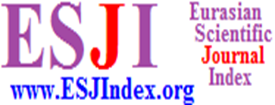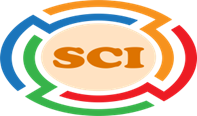Policy Document
Al-Marjān (المرجان)
Policy Document
Editor in Chief: Prof. Dr. Muhammad Saad Siddiqui
Editor: Dr. (Hafiz) Muhammad Aslam Khan
Publication Frequency: Bi-annual
ISSN Online: 3006-0370
ISSN Print: 3006-0362
Language: Urdu, Arabic and English
Review Type: Double Blind Peer Review
Abbreviated Key Title: AM
Area of Publication: Classical and Contemporary Religious Studies
Name of Publisher: Al-Marjān Research Center, Lahore, Pakistan, (SMC-Private), Limited.
Publisher Address: Allama Iqbal Town, Lahore, Pakistan.
Submission Guidelines
(A) Author Details
Authors should furnish their names, email addresses, phone number(s), current position/title, and the names of their affiliated universities/colleges on the title page of the manuscript to facilitate academic review and production. Each author must provide a working email ID, regardless of their correspondence status.
- All authors, whether 4 or 5, are requested to provide their ORCID.
- The Corresponding Author should clearly designate who will handle correspondence throughout refereeing and publication, including post-publication. Ensure that telephone and fax numbers (with country and area code) are provided along with the email address and complete postal address.
Only manuscripts that have not been previously published elsewhere and are not under consideration elsewhere will be considered for publication.
(B) Format Requirements: Paper Structure
- Submissions must include abstracts of 200-250 words, succinctly explaining the research's essence and arguments presented. The abstract should not introduce new information not outlined in the main body of the text. It should briefly outline the research's purpose, methodology, and conclusions. The article should be accompanied by 5-10 keywords or descriptive phrases
- The conclusion should summarize the main themes and points of the research, encapsulating the article's idea and the author’s findings.
- The paper should be written using Times New Roman 12-point font with double spacing. It should comprise a maximum of 6000-7500 words, including footnotes and references.
(C) Citation Guidelines
- All footnotes and bibliographies should adhere to the Chicago Manual of Style. The Journal of Islamic Thought and Civilization follows the Chicago Citation Style, Notes, and Bibliography Style (17th) for citations. This referencing style requires footnotes or endnotes in the text when citing and a bibliography at the document's end listing all cited works and any other consulted works. The bibliography should be arranged alphabetically by the author.
Footnotes:
- References/footnotes should follow the Chicago style, including author(s) name(s), journal title/book title, chapter title/article title, year of publication, volume number/book chapter, and pagination.
- Note numbers should commence with “1” and proceed consecutively throughout the text, using Arabic numerals (1, 2, 3), not Roman (i, ii, iii).
- In the text: Place the note number at the end of the sentence and after all punctuation where the reference appears, even if the cited material is mentioned at the sentence's beginning. In MS Word, this can be achieved by pressing Alt+ Ctrl+ F for footnotes and Alt+ Ctrl+ E for endnotes. Note numbers should be superscripted.
- Never reuse a number; use a new number for each reference, even if referencing the same source previously.
- Never use two note numbers at the end of a sentence.
- To cite multiple sources in a single note, separate the citations with a semicolon (;).
- When citing the same work immediately after its initial citation, use a shortened form.
- The use of DOI is highly recommended.
- All citations must be confirmed, providing the correct page number of the cited source and publication details. Uncorroborated citations will be removed entirely from the text by the editors.
Subdivision - Numbered Sections
Divide your article into clearly defined and numbered sections. Subsections should be numbered
- (then 1.1, 1.1.2 ...), 1.2, etc. (the abstract is not included in the section numbering). Use this numbering for internal cross-referencing as well: do not just refer to 'the text.’ Any subsection may be given a brief heading. Each heading should appear in its separate style format.
HEADINGS
- Consistency and parallel structure must be maintained in headings and
- Headline styles must be used for
- Headings and subheadings must begin on a new
- The level of hierarchy in the headings and subheadings must be clear and
- Headings and subheadings should not be ended with a
- Avoid using more than three levels of
- There should be more space before the subheadings than
- There can be two levels of headings without any text between
- Font should be any font that is readable, preferably Times New Roman 12
Quotation
A prose or quotation of five or more lines or more than 100 words should be “blocked.” The block quotation is single-spaced and takes no quotation marks, but an extra line space must be left immediately before and after the quote. Indent the entire quotation 0.5.” However, quotes less than 100 words would be incorporated within the text with inverted commas as running quotes.
Figures and Tables Embedded in Text
Please ensure the figures and the tables included in the single file are placed next to the relevant text in the manuscript, rather than at the bottom or the top of the file. The corresponding caption should be placed directly below the figure or table.
Bibliography
- The bibliography should start on a new page, and be titled ‘Bibliography’ at the top in 12 pt. Times New Roman font. Do not embolden the title.
- Use proper formatting for each type of source and always using a hanging The first line of the citation will begin on the margin, subsequent lines are indented (opposite of a footnote/endnote).
- The bibliography must be ordered
- Please note that name of the first author in the bibliography is inverted while in the case of more than one author rest of the names are not inverted. For more information regarding the Chicago Bibliography, please click.
Other Instructions
- Terms of other languages should be in Italics and
- Academic jargon that is specific to a particular discipline needs to be thoroughly elaborated upon or footnoted.
- The Manuscript must be ‘spell-checked’ and ‘grammar ’corrected
- The authors must get the article’s language edited to avoid
- Authors should attach a plagiarism report with a manuscript authorized by library
- Articles that are unoriginal and heavily plagiarized shall not be
- Articles not following Reference Guidelines e., Chicago Manual of Style for footnotes/Endnotes and Bibliography shall not be entertained.
Declaration
- Authors are required to provide an undertaking/declaration stating that the manuscript under consideration contains solely their original work that is not under consideration for publishing in any other journal in any form.
- A manuscript that is co-authored must be accompanied by an undertaking explicitly stating that each author has contributed substantially towards the preparation of the manuscript to claim the right to authorship.
- It is the responsibility of the corresponding author that s/he has ensured that all those who have substantially contributed in the manuscripts have been included in the author list and they have agreed to the order of authorship.
Review Procedure:
All submitted manuscripts are reviewed through 'double-blind' peer review process that means the identities of the authors are kept confidential from the reviewers, and vice versa. To make this possible, anonymized version of the manuscript are sent to referees.
Desk Review
Submitted papers are first considered by the editor after submission. Papers that do not fall within the scope of the journal are 'desk-rejected'. In addition, papers that fail to meet a minimum threshold for quality and originality are also rejected without being sent out to the reviewers.
The standard procedure of an initial editorial review by the internal editorial committee consists of the content, scope, formatting, citations according to recommended Style, i.e., Chicago Manual of Style, (Bibliographies and Notes format) and is usually completed in three to four weeks
Peer Review Policy
Papers passing through this initial editorial scrutiny are then typically sent out to minimum three referees (one national and two international). ". If one or more of these turn down the invitation to provide a review, other referees will subsequently be appointed. The authors will be informed when Editors decide further review is required. All publication decisions are made by the journal’s Chief Editor on the basis of the referees’ reports (reviewers report).
Please bear in mind that the peer review process takes another two- three months. Therefore, the contributors are expected to bear with us as we complete the process to ensure, that the Al-Marjān adheres to the highest quality standards.
In case if a manuscript is found to be plagiarized (see plagiarism policy) after publication, the Chief Editor will conduct a preliminary investigation, maybe with the help of a suitable committee constituted for the purpose. If the manuscript is found to be plagiarized beyond the acceptable limits, the journal will contact the author’s Institute / College / University and Funding Agency, if any.
We are advising all the author(s), do not submit the same paper to multiple journals. Author(s) should wait for the review status of the paper.
Disclaimer
The Editor reserves the right to copy-edit and make necessary amendments to the submitted text. The editor also reserves the right to modify or omit material if deemed unsuitable for publication. However, all responsibility for opinions expressed in articles as well as the precision of stated facts rests with the author and not with the editors of the Journal of Islamic Thought and Civilization.
Originality and Plagiarism:
- It is the author’s responsibility to ascertain that she/he has submitted an entirely original work, giving due credit, by proper citations, to the works and/or words of others where they have been used.
- Plagiarism in all its forms constitutes unethical publishing behavior and is not acceptable. Material quoted verbatim from the author's previously published work or other sources must be placed in quotation marks.
- As per HEC policy, in case the manuscript has a similarity index of more than 19%, it will either be rejected or left at the discretion of the Editorial Board for the purpose of a conditional acceptance. For further guidance see HEC plagssssiarism policy.
Ethical Guidelines:
This Journal’s publication ethics and publication malpractice statement is loosely based on the Code of Conduct andBest-Practice Guidelines for Journal Editors (Committee on Publication Ethics, 2011).
- Editors’ Duties
- The editor will use his/her intellectual discretion in deciding which of the manuscripts submitted will be forwarded for This decision is solely based on the research conducted in the manuscript, originality, clarity of narrative, language and grammar as relevance to the paradigm of the journal. The important factors of copyright infringement, intellectual plagiarism and libel will also be accounted for.
- The authors’ gender, race, religious belief and political background will not be a definitive factor in the decisionprocess.
- Editors’ need to outline clearly and concisely what is expected of authors in the form of regularly updated guidance. This link should be mentioned: http://publicationethics.org/resources/code-conduct.
- Editors need to provide guidance to reviewers on what exactly is expected of them. This includes the informationon confidentiality. This guidance should be regularly updated.
- Editors should encourage good practice and comment on the originality of the research and be alerted
- Editors should have the resources to be able to check plagiarism. (e.g. software, searching for new titles).
- The Editor will not use any additional material from his own
- Editors should try and improve the journal and take it towards betterment by taking the views of the boardmembers and reviewers into consideration.
- Be generally cognizant of new peer reviews and publishing methods and constantly reassess the processes of theJournal.
- They should ensure that all published reports and reviews of research have been reviewed by suitably qualifiedreviewers.
- Peer reviewers should be encouraged to comment on ethical questions and misconduct raised by
- Academic institutions should be encouraged to recognize peer reviewing as being part of the scholarly
- Editors should have a maintained database on the reviewers and consistently update the reviewers
- Editors should use a range of sources to look at potentially new reviewers. They should not just use personalcontacts.
- Manuscripts should be handled with utmost care and
- Editors should protect the identities of peer They should have a system in place that ensures thatmanuscripts submitted for publication retains confidentiality whilst being processed.
- Reviewers’ comments and suggestions should be openly forwarded to authors, unless they contain maliciouslanguage, libel or offensive remarks.
- Editorial board members should be consulted annually to get their feedback on the
- Journals should have policies and systems in place to ensure that commercial considerations do not affect editorialdecisions.
- A general description of the Journal’s income sources should be declared (e.g. print charges, reprint sales).
- Authors’ Duties
- The work should be as original as possible and appropriately cite the work or words and ideas of others. Borrowing of ideas and knowledge and research is also permitted provided it is cited correctly. If the work and/or words of others have been used, this has been appropriately
- Authors should present an objective discussion of the significance of research work as well as sufficient detail andreferences
- Authors should follow the submission guidelines of the Journal. These are outlined at :
https://al-marjan.com.pk/index.php/Journal/authorguidelines
- The manuscript should only be submitted and published in one paper and multiple publications of the same manuscript is unacceptable and completely unethical. Previously published manuscripts cannot be submitted under any circumstances.
- Should be limited to those who have made a substantial contribution to the body of work and to its genesis. Those who have made a significant contribution should be listed as co-
- In any event, authors should ensure accessibility of such data to other competent professionals for at least ten years after publication (preferably via an institutional or subject- based data repository or other data centre), provided that the confidentiality of the
- Authors should use well reputed, substantiated and well known sources
- Authors should provide a plagiarism report along with the submission of the
- Reviewers’ Responsibilities:
- Manuscripts should be treated as confidential documents. They must not be disclosed or discussed with other persons apart from the editor.
- An editor must not use unpublished information in the editor's own research without the express written consent of the author.
- Editors should evaluate manuscripts exclusively on the basis of their academic
- Reviews should be conducted in an objective Personal remarks should not be passed and will be regardedas inappropriate. Supporting arguments in the case of disagreements should be presented.
- Reviewers should not consider manuscripts in which they have conflicts of interest resulting from competitive, collaborative, or other relationships or connections with any of the authors, companies, or institutions connected to the papers.
- Peer reviewing process is in place in order to help the editorial changes to be made in addition to ensuring the quality of the journal is maintained.
Privacy Statement:
Al-Marjān follows an open-access publishing policy and all articles are free to access. Any submission to Al-Marjān must be original, that is, neither published previously nor accepted/under consideration for publication elsewhere. On acceptance of a manuscript, the corresponding author on the behalf of all co-authors will sign and submit a Copyright and Author Consent Form.
The author(s) shall be solely responsible for any information written/informed/reported in the submitted manuscript. It is the author's responsibility to obtain signed permission from the copyright holder to use and reproduce text, illustrations, tables, etc., published previously in other journals, electronic or print media. Articles can be reproduced, distributed, derived and may be used commercially_ provided the original work is properly cited. Author(s) possess the full rights of their published articles.
Disclaimer
Al-Marjān follows the licensing agreements by Creative Common Attribution 4.0 (CC BY 4.0). This indicates that you are free to:
Share -copy and redistribute the material in any medium or format
Adapt- remix, transform, and build upon the material for any purpose, even commercially, provided that you follow license terms.
Author E-prints
Al-Marjān supports a range of author benefit policies with respect to providing authors with an e-print and the opportunity to purchase offprints. E-prints are sent out automatically to the corresponding authors of the published articles ahead of print and in print issues. A link is provided allowing the author to download the article directly from the Al-Marjān journals’ website and forward the link onto their co-authors. Please refer to the manuscript submission guidelines for the policy of the Al-Marjān journals in submitting or publishing your article. You agree to the terms and conditions of the privacy policy by using the website. We may make changes in the privacy policy in the case of exceptional circumstances. We recommend that to check the privacy statement regularly to keep you updated about such changes. You have to exit the site immediately if you don’t agree to any term and condition of privacy statement.
Publication Process Map:
Article Processing Charges (APC) Information:
Al-Marjān Research Journal (An International Journal of Islamic and Social Sciences) is full open access and licensed under Creative Commons Attribution 4.0 International License; and published by: Muslim Intellectual Research Center, Lahore, Pakistan. This allows the research community and the general public to gain unlimited, free and immediate access to scholarly articles, and to reuse the content freely provided that proper attribution is given to the original authors. To cover the cost for providing our high-quality publishing service and free access to readers, authors pay Article Processing Charges (APC) after internal/desk review. There are no submission charges, and no surcharges based on the length of an article, figures or supplementary data.
If the paper is accepted after the desk review, the author(s) will be asked to pay RS. 12,000 /PKR for one author and 15,000 for two authors.
Contact WhatsApp numbers for bank account details of article processing charges.
+92 306 6804052
Disclosure and Conflict of Interest:
A Declaration of Conflicting Interests policy refers to a formal policy a journal may have to require a conflict-of-interest statement or conflict of interest disclosure from a submitting or publishing author.
The Committee on Publication Ethics (COPE) states in its Guidelines on Good Publication Practice (2003) that: “Conflicts of interest arise when authors, reviewers, or editors have interests that are not fully apparent and that may influence their judgments on what is published. They have been described as those which, when revealed later, would make a reasonable reader feel misled or deceived.”
Many scholars, researchers, and professionals may have potential conflicts of interest that could affect their research. As a result, the journal requires a formal declaration of conflicting interests enabling a statement to be carried within the paginated published article. A potential conflict of interest may arise from relationships, allegiances, or hostilities to particular groups, organizations or interests, which may influence one’s judgments or actions excessively. The issue is particularly sensitive when such interests are private and/or may result in personal gain.
All manuscripts submitted to the journal are evaluated fairly and are not necessarily rejected when any competing interests are declared.
Examples of conflicts of interest might include the following, although it is not an exhaustive list: Having received fees for consulting.
Having received research funding.
Having been employed by a related company.
Holding stocks or shares in a company that might be affected by the publication of your paper.
Having received funds reimbursing you for attending related symposia, or talk.
If there are other interests that the reasonable reader might feel has affected your research you may also wish to declare them. (Please note that it is not expected that details of financial arrangements be disclosed when a competing interest is declared.)
Conflict of Interests_
Upon identification of any conflict of interest, the editors may require more information from the author that may include the following:
- Acknowledgement of financial support/sponsorship in their
- Any commercial or financial involvements that might present an appearance of a conflict of interest related to the contribution are disclosed in a covering letter accompanying the contribution and all such potential conflicts of interest will be discussed with the editor as to whether disclosure of this information with the published contribution is to be made in the journal.
- If they have signed an agreement with any sponsor of the research reported in the contribution that prevents you from publishing both positive and negative results or that forbids you from publishing this research without prior approval of the sponsor.
- If they have checked the manuscript submission guidelines to ensure whether the journal requires a Declaration of Conflicting Interests and have complied with the requirements specified where such a policy exists.
The Authors are required to fill and sign the Copyright and Author Consent Form upon submitting the manuscript.
Editor obligations regarding conflicting interests_
The same obligations equally apply to the editors or guest editors writing an editorial for the journal. When you are submitting or publishing your article in a journal which requires you to make a Declaration of Conflicting Interests, please include such a declaration at the end of your manuscript after any Acknowledgements and prior to the Funding Acknowledgement, Notes (if relevant) and References, under the heading 'Declaration of Conflicting Interest'. If no conflict exists, please state that 'The Author(s) declare(s) that there is no conflict of interest'.
*Please note, a Conflict of Interest Statement will not appear in journals that do not require a declaration of conflicting interests. Where a declaration is required the disclosure information must be specific and include any financial relationship that all authors of the article have with any sponsoring organization and the for-profit interests the organization represents, and with any for- profit product discussed or implied in the text of the article.
Correction and Retraction Policy:
Authors who discover errors in articles they have published should have the corresponding author contact the journal’s editorial office with a detailed description of the correction that is needed. Corrigenda (corrections of author’s errors) and errata (corrections of publisher’s errors) will be published at no charge to the authors. Requests for corrections that affect the interpretation or conclusions of a published article will be reviewed by the editors. An article may be retracted when the integrity of the published work is substantially undermined owing to errors in the conduct, analysis, and/or reporting of the study. Violation of publication or research ethics may also result in a study’s retraction. The original article is marked as retracted but a PDF version remains available to readers, and the retraction statement is bi-directionally linked to the original published paper. Retraction statements will typically include a statement of assent or dissent from the authors. In exceptional circumstances, the editorial office reserves the right to remove an article from the journal’s online platforms. Such action may be taken when (i) the editorial office has been advised that content is defamatory, infringes a third party’s intellectual property right, right to privacy, or other legal rights, or is otherwise unlawful; (ii) a court or government order has been issued, or is likely to be issued, requiring removal of such content; (iii) content, if acted upon, would pose an immediate and serious risk to health. Removal may be temporary or permanent. Bibliographic metadata (e.g. title and authors) will be retained and will be accompanied by a statement explaining why the content has been removed.
Contribution and consents of each author and any other information:
Authorship Policy
- AuthorshipCredit
Authorship credits may only be given to those who have made a substantial contribution in constructing the article.
The corresponding author of the article holds the responsibility to give credits to the co-authors that are significantly involved in the work. Also, the corresponding author should make sure that all the co-authors have approved the final submission and ready-to-publish version of the article. Others who have participated in certain substantive aspects of the research should be acknowledged for their contribution in an "Acknowledgement" section.
- Changes in Authorship
The authors are fully responsible to provide the names of the authors upon submitting the article to the journal. Once the article is accepted for publication, any addition, deletion, or rearrangement of the authors’ names will not be entertained unless approved by the journal’s editor. To request such a change, the corresponding author must provide the journal’s editor with: (a) the reason for the change in the author list and (b) written confirmation (e-mail, letter) from all authors that they agree with the addition, removal or rearrangement, along with the confirmation from the author being added or removed. Only in exceptional circumstances and with considerable reason/s will the editor may consider the addition, deletion, or rearrangement of authors after the manuscript has been accepted. While the editor considers the request, the processing of the manuscript for publication will be put on hold. If the manuscript has already been published in an online issue, any requests may not be entertained by the editor.
- Order of Authors
It the responsibility of the authors to have a mutual agreement on the order of the authors before submitting the article to the journal. Any such disagreements must be ruled out before the submission.
- Guest Authorship
The “guest” author makes no significant contributions to the study, hence, do not qualify for authorship. The Al-Marjān journals do not allow the appearance of guest authorship on the articles.
- Anonymous Authorship
Because authorship should be transparent and requires public accountability, it is not appropriate to use pseudonyms or to publish scientific reports anonymously. In extremely rare cases, when the author can make a credible claim that attaching his or her name to the document could cause serious hardship (e.g., a threat to personal safety or loss of employment), a journal editor may decide to publish anonymous content.
- Acknowledgment
In the Acknowledgments section, authors may wish to include the names and contributions of those whose involvement in a study did not qualify them for authorship (because of the journal policy) but have contributed to the article in some way.
- Contributors
"Ghost" and/or "Guest" author phenomenon has been common in the traditional listing of research papers. This has been raising inappropriate authorship practice in which some individuals did not have an actual input in the experiment. For this, the journal highly recommends that only authors who have made a significant scientific contribution to the research in the manuscript shall be listed individually in the submitted manuscript (including students and lab technicians).
- Duplicate Submission
Articles that are found to have been published elsewhere, or are under consideration for publishing elsewhere, will be considered as "duplicated" material. In case the author(s) have used their own previously published work (or work that is currently under review), they are asked to cite the previous work and indicate how their submitted manuscript offers novel contributions and adds value differently (from the previous work).
- Citation Manipulation
Submitted manuscripts that are found to include citations in order to increase the number of citations to a given author’s work, or to articles published in a particular journal, will be considered as a "citation manipulation"-containing material.


